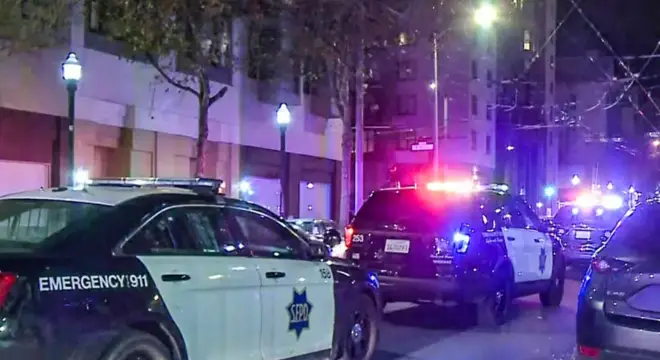Man Dies Following Rescue From Burning Delaware Home
I want to start by giving you a clear, honest picture of what happened in Bear, Delaware on Tuesday night. Around 7:15 p.m., a fire tore through a home on N. Dragon Drive. Firefighters rushed in after getting reports that someone was trapped inside.
They pulled a man out of the burning home and did everything they could to keep him alive as he was taken to Christiana Hospital.
He didn’t make it.
Officials haven’t released his name yet, and the Delaware State Fire Marshal’s Office is now working to understand how the fire started. Moments like this hit harder because they remind you how fast an ordinary evening can turn into something no family is ever prepared for.
Before we explore the rest of the story, take a second to think about how quickly a fire can change someone’s life — or yours. What’s the first thing you would do if smoke filled your home?.
How the Fire Unfolded: A Simple Timeline You Can Follow

When I read the report from 6abc, one thing stood out immediately — how fast everything happened. The fire started around 7:15 p.m. on N. Dragon Drive, right when most people are settling in for the evening. Within minutes, smoke had already filled the home, and firefighters were on the scene trying to reach the man trapped inside.
According to 6abc’s coverage, crews pushed into the burning home, found him inside, and pulled him out so he could be rushed to Christiana Hospital. You can almost imagine that moment — a house glowing orange, responders moving fast, neighbors watching from their porches, hoping the man would make it.
The truth is, house fires don’t give you time to think. They move faster than you expect, and once someone is trapped, every second feels like it’s running out. This timeline matters because it shows how quickly a normal evening can slip out of control, even with trained teams working as fast as they can.
A Look at the Neighborhood: N. Dragon Drive in Bear, Delaware
If you know Bear or have ever driven through it, you probably picture a quiet residential stretch where families live side by side. N. Dragon Drive is one of those places — the kind of street where you expect kids’ bikes on lawns and evening walks, not flashing lights and smoke.
Fires in communities like this always feel more personal. People know each other. They notice when something’s wrong. And when a fire breaks out, it rattles the sense of normalcy that neighborhoods like this depend on.
For anyone living nearby, this isn’t just a headline — it’s a reminder that danger doesn’t always come from far away. Sometimes it’s sitting inside the walls of a home you’ve lived in for years.
We’ve seen similar moments in other quiet communities too, like the Herkimer County house fire where one person lost their life, and neighbors described the same sudden shock.
What We Know About the Man Who Was Rescued
Right now, officials aren’t releasing his name, and I think it’s important to respect that. Families deserve time before the world starts asking questions. What we do know is that firefighters found him inside the home — which means he likely didn’t have time to escape, or something prevented him from getting out.
When the Fire Marshal delays releasing a name, it usually means they’re notifying family members or waiting for the investigation to move forward. It’s a painful process, and even though we don’t know his story yet, we know enough to understand the loss.
He wasn’t just “a victim.” He was someone with a life, people, routines, things he cared about. And that’s what makes stories like this stay with you.
The Rescue: How Firefighters Fought Through Smoke to Reach Him

I’ve covered enough fires over the years to know one thing: going inside a burning home is never easy, even for seasoned crews. The smoke is blinding. The heat hits in waves. And there’s no guarantee they’ll find anyone alive.
But firefighters still went in. They searched the home, found the man inside, and brought him out so paramedics could work on him immediately. That kind of determination deserves to be acknowledged. These aren’t just responders — they’re the reason many families get a second chance.
Even though this man didn’t survive, the effort matters. It shows how committed these crews are, even when the odds are stacked against them.
What Investigators Are Looking At Now?
The Delaware State Fire Marshal’s Office has taken over, which means they’re going piece by piece through what’s left of the home. If you’ve ever seen a fire investigation up close, you know it’s slow and methodical. They’ll look at:
- where the fire started
- whether anything electrical failed
- if heating equipment or appliances were involved
- whether there were smoke detectors inside, and if they worked
- signs of accidental ignition
Officials don’t rush these findings because a wrong assumption can mislead families and the community. And sometimes, the smallest detail — a melted outlet, a damaged wire — becomes the key to understanding the entire chain of events.
For now, all we know is that the cause is “under investigation.” But as updates come out, we’ll have a clearer picture of what sparked this tragedy and whether anything could’ve prevented it.
The Bigger Picture: Common Causes of Home Fires in Delaware
Whenever I cover a fire like this, I try to zoom out for a moment. One incident can feel isolated, but in reality, Delaware sees far more home fires than most people realize. And if you look at state and national data, the patterns become hard to ignore.
Most deadly house fires usually come down to a few common causes: electrical failures, space heaters pushed too close to furniture, cooking left unattended, and—one of the most overlooked issues—missing or dead smoke alarms. You’d be surprised how many homes don’t have working detectors, even though they’re one of the simplest life-saving tools.
I’m not saying any of these caused this particular fire. Investigators will tell us that soon enough. But when you see how often these patterns show up, it becomes impossible not to think about how many tragedies could be prevented with small, consistent habits.
What You Can Learn From This: Small Choices That Save Lives
Talking about safety always feels a little heavy after a tragedy, but this is exactly when people actually listen. And if even one reader checks their smoke alarm or clears a cluttered hallway because of this, that matters.
So here’s what I would tell you as a friend, not as a reporter:
- Check your smoke detectors today.
- Keep at least one exit path clear in every room.
- Don’t plug too many things into the same outlet.
And if something in your home feels “a little off”—a smell, a spark, a flicker—don’t ignore it.
Fires don’t care if you’re careful 364 days a year. They only need the one day you’re not paying attention.
This section isn’t about fear. It’s about awareness. If something like this can happen in a quiet neighborhood in Bear, it can happen anywhere.
Recent Fires in Delaware: Is There a Pattern?
You might’ve noticed more fire stories from Delaware in the news lately. I have too. Every time I see another headline — someone rescued in Claymont, a family displaced in Newark, smoke pouring out of a duplex in Wilmington — the same question pops up:
Is something bigger going on?
Sometimes it’s seasonal. Cold months bring heaters, candles, and tighter spaces. Other times it’s older neighborhoods where wiring hasn’t been updated in decades. And sometimes it’s just a streak of bad luck hitting all at once.
But when multiple fires hit the same county within weeks, it’s natural for people to feel uneasy. It doesn’t mean your home is unsafe — it just means this might be the right moment to look around and make sure everything is in good shape.
If you follow real-time safety updates and local incident alerts, there’s a WhatsApp broadcast I keep an eye on — they share short, factual updates without noise. It’s been surprisingly useful for staying aware.
How the Community Is Processing This?
Whenever a fire happens on a neighborhood street, people don’t just see smoke — they feel it in their chest. They watch firefighters rushing in. They see a stretcher being carried out. They hear that someone didn’t survive. And suddenly the block feels different.
Even if you didn’t know the man who died, you still feel the weight of it. You think about the family who will get that late-night phone call. You think about your own home, your kids, your parents.
And if you’ve ever lived in a close-knit community, you know people will talk about this for weeks. They’ll check on each other a little more. They’ll leave porch lights on. They’ll remind each other to stay safe. Tragedies like this have a way of pulling neighbors closer, even if just for a while.
It reminded me of an incident in Great Falls where firefighters managed to get everyone out safely — a moment that shows how different each fire’s outcome can be.
What Happens Next From Officials?
Right now, investigators are going through the home piece by piece. The Fire Marshal will release the cause once they’re confident in the findings, not a moment sooner. And at some point, they’ll also release the man’s identity, but only after notifying the family and completing the necessary steps.
You can expect an update in the next few days or weeks, depending on how complex the investigation is. Fire cases are rarely straightforward. Sometimes the clues survive the flames. Sometimes they don’t.
What’s clear is that this isn’t a closed story. More details will surface. The community will want answers. And officials will eventually give them.
Another community in Jefferson County went through something similar recently when a mobile home fire took a life and left residents shaken in the same way.
A Quiet Reminder to All of Us
Stories like this stay with you. Not because of the flames or the headlines, but because of how quickly life can shift. One moment you’re inside your home, doing something ordinary. The next moment, everything changes.
Take this as a reminder to look around your own home tonight. Check what you’ve been putting off. Test the smoke alarm. Move the space heater. Clear the hallway. It takes two minutes, and it could mean everything someday.
Let me ask you something before you go: When was the last time you checked your smoke detector?
If you want, I can help you put together a simple 60-second fire-safety checklist. Just say the word.
If you want deeper breakdowns of how fires start and how communities handle them, you can explore more safety stories on our website. They’ll give you a clearer picture of what really puts homes at risk.
Disclaimer: The details in this article are based on information released by officials at the time of writing. Investigations are still ongoing, and updates may change parts of this story. Readers should avoid drawing conclusions until authorities share their final report.


